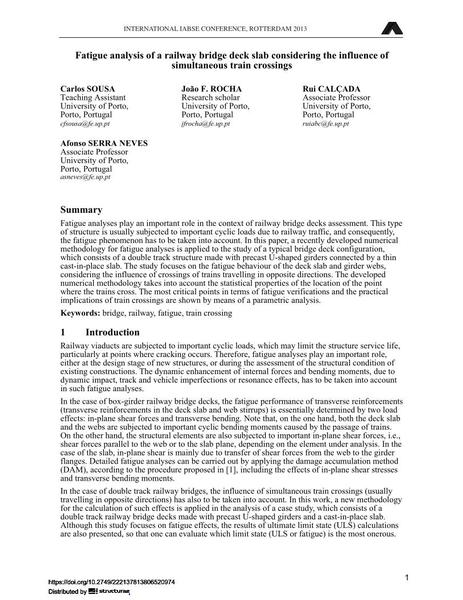Fatigue analysis of a railway bridge deck slab considering the influence of simultaneous train crossings

|
|
|||||||||||
Bibliographic Details
| Author(s): |
Carlos Sousa
João F. Rocha Rui Calçada Afonso Serra Neves |
||||
|---|---|---|---|---|---|
| Medium: | conference paper | ||||
| Language(s): | English | ||||
| Conference: | IABSE Conference: Assessment, Upgrading and Refurbishment of Infrastructures, Rotterdam, The Netherlands, 6-8 May 2013 | ||||
| Published in: | IABSE Conference, Rotterdam, May 2013 | ||||
|
|||||
| Page(s): | 436-437 | ||||
| Total no. of pages: | 8 | ||||
| Year: | 2013 | ||||
| DOI: | 10.2749/222137813806520974 | ||||
| Abstract: |
Fatigue analyses play an important role in the context of railway bridge decks assessment. This type of structure is usually subjected to important cyclic loads due to railway traffic, and consequently, the fatigue phenomenon has to be taken into account. In this paper, a recently developed numerical methodology for fatigue analyses is applied to the study of a typical bridge deck configuration, which consists of a double track structure made with precast U-shaped girders connected by a thin cast-in-place slab. The study focuses on the fatigue behaviour of the deck slab and girder webs, considering the influence of crossings of trains travelling in opposite directions. The developed numerical methodology takes into account the statistical properties of the location of the point where the trains cross. The most critical points in terms of fatigue verifications and the practical implications of train crossings are shown by means of a parametric analysis. |
||||
| Keywords: |
bridge fatigue railroad train crossing
|
||||
